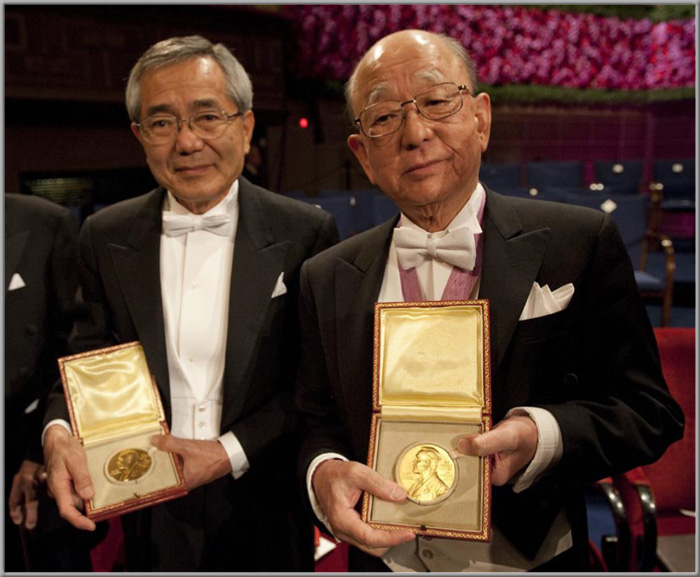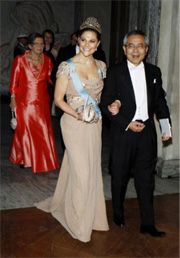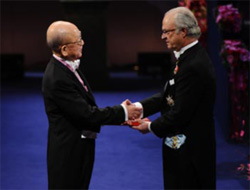Home > Highlighting JAPAN > Highlighting Japan JANUARY 2011 > Pioneers in Organic Synthesis
Highlighting JAPAN
TOPICS

Caption: Compatriots Ei-ichi Negishi (left) and Akira Suzuki of Japan display their medals for the 2010 Nobel Prize in Chemistry at the Concert Hall in Stockholm, December 10, 2010.
Credit: REUTERS/AFLO
Pioneers in Organic Synthesis

Ei-ichi Negishi escorts Sweden's Crown Princess Victoria to the Nobel banquet at the Stockholm City Hall, December 10, 2010.
Credit: ALL OVER PRESS SWEDEN/AFLO
Cross-coupling is a chemical reaction that uses a catalyst to bind together two distinct organic compounds (compounds that include carbon), creating a different organic compound. In the past, organic compounds such as plastic or synthetic fiber have been artificially produced using chemical reactions. However, binding does not occur simply by mixing organic compounds. The reason for this is that the carbon atoms that make up organic compounds possess properties that do not easily fuse with other carbon atoms.

Akira Suzuki (left) receives the joint 2010 Nobel Prize in Chemistry from Swedish King Carl XVI Gustaf at the Concert Hall in Stockholm, December 10, 2010.
Credit: REUTERS/AFLO
The Award Ceremony was held on December 10, 2010 in Stockholm, Sweden. At the banquet following the Award Ceremony, Professor Negishi delivered a speech on behalf of the three recipients of the chemistry prize. In his speech, Professor Negishi said, "Receiving a Nobel Prize is the ultimate recognition for a lifetime spent questioning, exploring, experimenting; passing through the valleys of anguish to climb the mountains of success." He also said, "Our work in palladium-catalyzed cross-couplings in organic synthesis has been ongoing for many years and it will continue. But the full impact of it is not yet realized. Others will use what we have learned, build on what we have discovered and use this to help people and technology in ways that we can only imagine today."
This year's awards bring the total number of Japanese Nobel laureates, including one recipient based in the United States, to eighteen.
© 2009 Cabinet Office, Government of Japan






